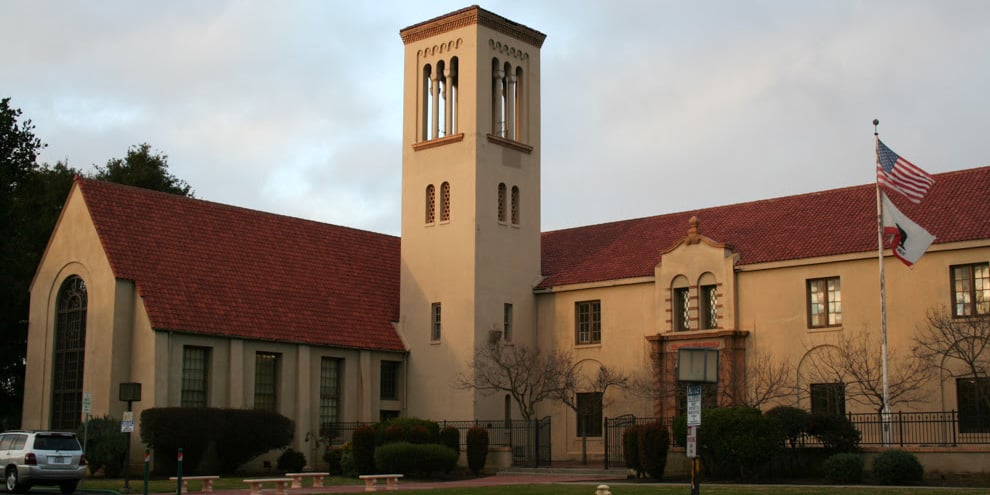Stanford has disputed claims by President of the Santa Clara County Board of Supervisors Joe Simitian that the University expressed an intention to pull back on aspects of an earlier deal to provide funds to the Palo Alto Unified School District (PAUSD).
Simitian initially detailed to the Palo Alto Daily Post on May 17 a conversation he’d had with University President Marc Tessier-Lavigne and Vice President of Land, Buildings and Real Estate Robert Reidy during which a smaller funding package was offered to the school district. Simitian claimed that the University was “very explicit” about not providing $16.5 million worth of construction funds, as had initially been agreed to.
The University did not renege on the rest of the $138.4 million that PAUSD would receive under the deal, Simitian told the Post.
University spokesperson Ernest Miranda denied Simitian’s claims about the withdrawn construction funds, telling The Stanford Daily that “Stanford has been steadfast in its commitment to the full scope of benefits for the school district that are included in the agreement.”
“Stanford and the County discussed different options for how to structure the agreement, but Stanford was very clear throughout those deliberations that it was still willing to provide all of the benefits in the agreement,” Miranda added. “Following those discussions, Stanford has reaffirmed that the benefits should be part of a comprehensive development agreement.”
However, Simitian told the Post that three other unidentified people — one of whom also sits on the Board of Supervisors — heard Stanford make a “lesser offer” during a phone call between the two parties.
This debate comes in the wake of Stanford halting its talks with PAUSD over a $138.4-million conditional funding agreement, which the University initially committed to amid pressure over the impact its planned expansion would have on local communities.
The funding would have included money for transportation improvements through the Safe Routes to School Program and the construction of an “innovation space” shared between Stanford and PAUSD, as well as a $5,800 payment made to the school district for each new student living in Stanford’s tax-exempt housing. It is funding for the first two projects which composes the disputed $16.5 million.
Although both Tessier-Lavigne and PAUSD Superintendent Don Austin initially commended the deal, it was withdrawn when Santa Clara County suspended negotiations with Stanford over the University’s General Use Permit (GUP) for the proposed expansions.
Simitian explained at the time that the suspension occurred because the conditional funding deal between the University and PAUSD violated negotiation ground rules that had been established between the University and the County. However, because the Santa Clara-Stanford development agreement was a precondition for the PAUSD-Stanford conditional deal, the suspension of the former prevented forward motion on the latter as well.
In the aftermath of the halted negotiations, Austin told The Daily that Stanford asked PAUSD to pause negotiations until the University was “able to work through a Development Agreement” with Santa Clara.
“Personally, I believe the Stanford team and trust them to deliver as they have promised,” Austin said to The Daily, referring to the suspended deal. “The proposed mitigation [of the development plans via the conditional funding] … addressed the interest[s] of both parties. At this point, it is the County’s turn to engage the University.”
While the County and Stanford have discussed ways to structure their agreement going forward, Bernam maintains that these are confidential, he told the Post.
Miranda told The Daily that “any decision by the County to enter into a development agreement would have to take place after the County has conducted open, public hearings on a draft agreement,” adding that a public feedback period on the agreement is necessary.
This Thursday, county planners will request that Stanford comply with “conditions of approval,” which will require the University to “build between 2,172 and 2,892 housing units and between 2,600 and 2,807 student beds.”
The University is still seeking approval for a $3.5-million-square-foot expansion of its campus, and has also requested that “at least 70 percent of the market-rate units and 40 percent of the affordable units” be built on campus, and that “any off-campus units [be] built within 6 miles of campus.”
The Board of Supervisors and Planning Commission plan to publicly disclose their conditions for any agreement in hopes of gaining public feedback. This would help provide structured preconditions for an eventual deal with Stanford.
Contact Yusra Arub at yusraarub19 ‘at’ mittymonarch.com.
